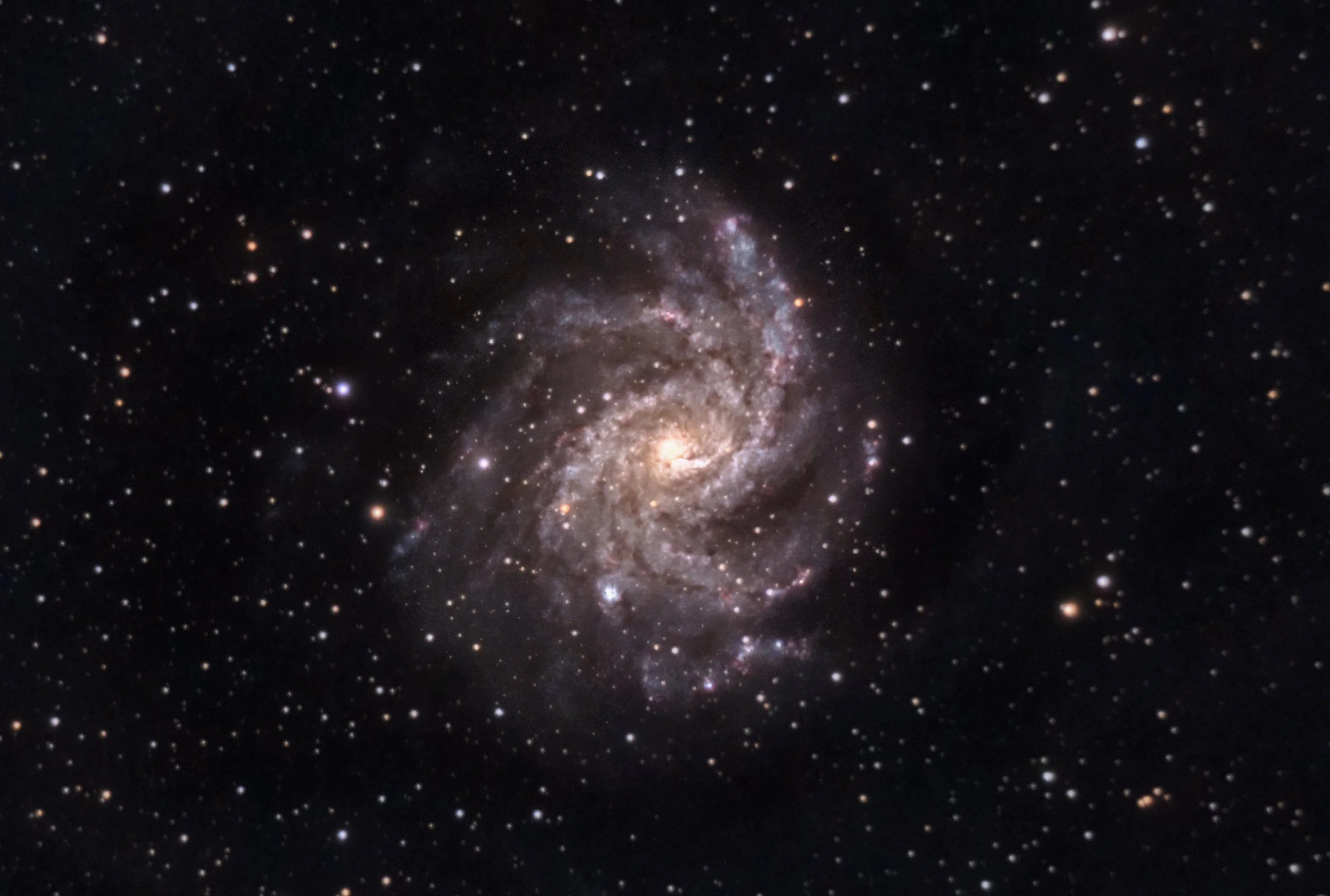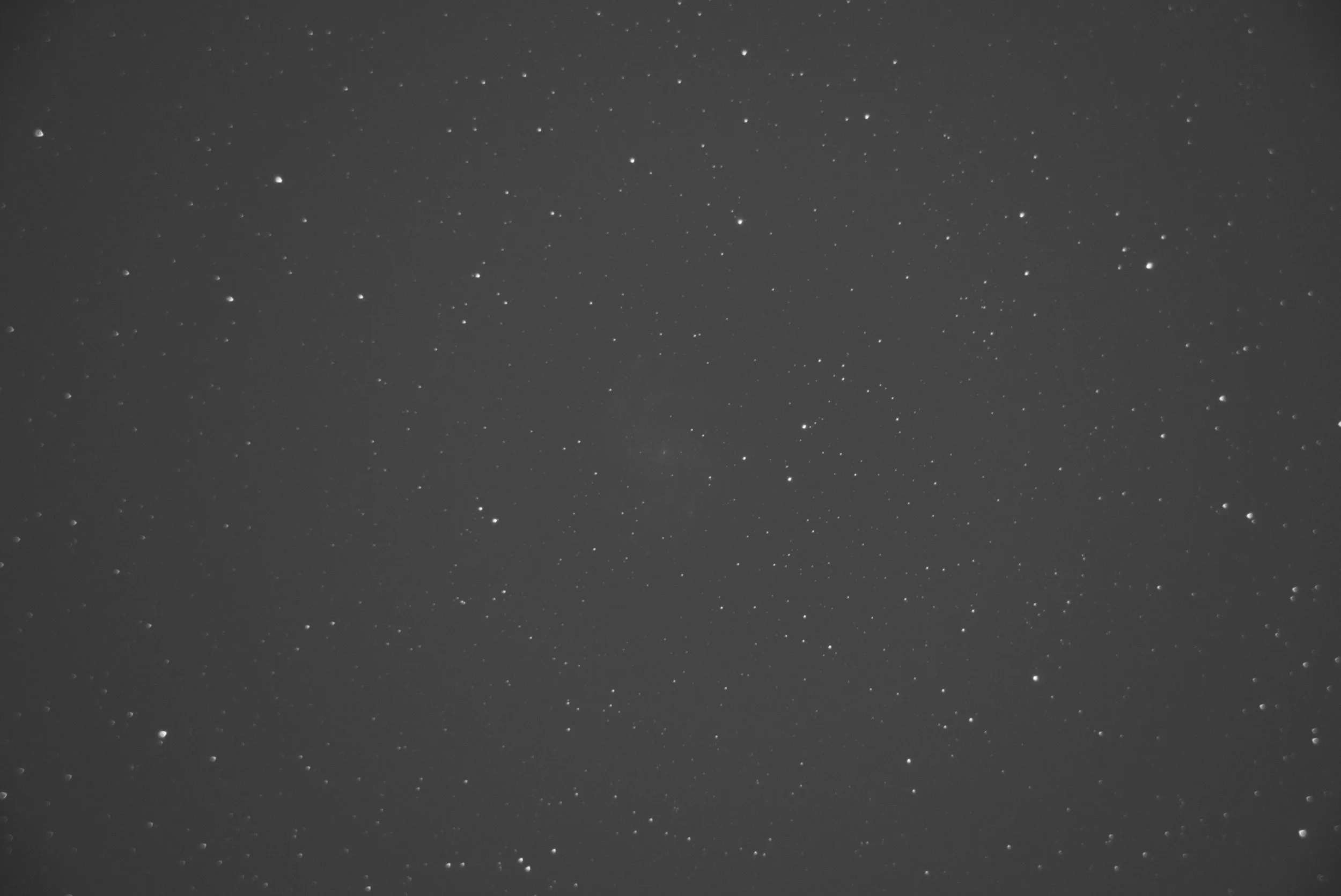NGC 6946 - The Fireworks Galaxy
Type: Grand Design, Intermediate Spiral Galaxy
Discoverer: William Herschel, 1798
Size: 87,300 ly
Distance: 22 Mly
Age: Unknown
Constellation: Between Cepheus and Cygnus
Other Names: Caldwell 12
My Notes:
NGC 6946, The Fireworks Galaxy
Over two clear nights, I captured this image of NGC 6946, The Fireworks Galaxy, gathering a total of 56 exposures over 216 minutes (3 hours and 36 minutes) using a Celestron NexStar 6SE at its native 1500 mm focal length (f/10) and a ZWO ASI2600MC color camera. No filters were used, allowing the natural light of the galaxy to be recorded in full. The data was processed using Siril, GraXpert, Photoshop, and Topaz Photo to bring out fine detail and color while preserving a natural appearance.
The result reveals the vivid purples and reds of countless star-forming regions scattered across its spiral arms. About 22 million light-years away, this galaxy has lived up to its fiery nickname. Ten supernovae have been recorded here in just the past century, far outshining the quiet pace of our own Milky Way, which averages only two per century.
Discovered by William Herschel in 1798, NGC 6946 presents itself face-on, giving us a direct view into its swirling heart. Spanning about 87,300 light-years across, it is slightly smaller than our Milky Way yet no less magnificent. Its structure lies between that of a classic spiral and a barred spiral, with a subtle central bar guiding gas toward regions where new stars ignite. The soft purple glow comes from immense clouds of hydrogen and oxygen energized by those newborn stars. Seen through the telescope, it feels less like a distant galaxy and more like a grand display of cosmic fireworks—an entire galaxy caught in the act of creation.
NGC 6946 – The Fireworks Galaxy. Edited in Siril, GraXpert, Photoshop, and Topaz Photo. 54 frames at 240 sec (03:36:00 total) f/10 1500mm – Celestron NexStar 6SE & ZWO ASI2600MC Air (2 nights 2025/09/28 & 29)
Wider FOV of NGC 6946
One of the 240 second subs. These are what get stacked to form the final image.
The location of NGC 6946 in the sky from Lincoln, NE. Image Credit: Stellarium



